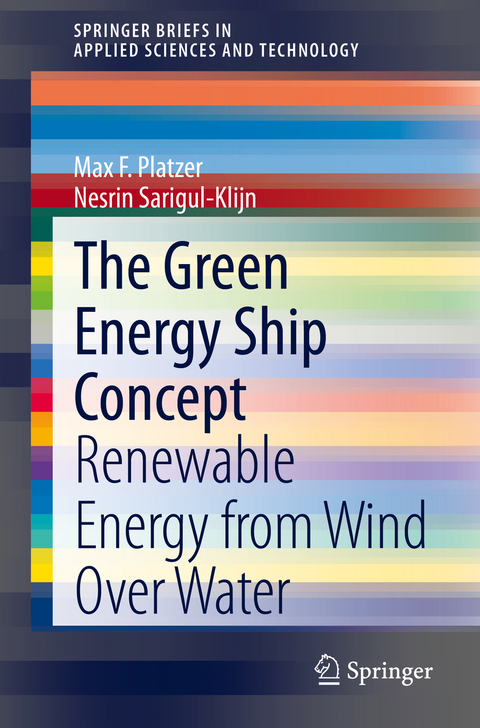
The Green Energy Ship Concept
Springer International Publishing (Verlag)
978-3-030-58243-2 (ISBN)
Dr. Max F. Platzer is an Adjunct Professor of Mechanical & Aerospace Engineering at the University of California Davis. He holds Diploma Engineer and Doctor of Technical Sciences degrees from the Technical University of Vienna, Austria. He was a member of Wernher von Braun's SATURN rocket development team for six years, chief of the Aeromechanics Research Section at the Lockheed-Georgia Research Center for four years and a Professor of Aeronautics and Astronautics at the Naval Postgraduate School, Monterey, California, for thirty-four years. Dr. Platzer received the distinguished professor medal of the Naval Postgraduate School. He is a Fellow of the American Institute of Aeronautics and Astronautics and of the American Society of Mechanical Engineers. Currently, he is editor of the international review journal "Progress in Aerospace Sciences". Dr. Nesrin Sarigul-Klijn is a Full Professor of Mechanical & Aerospace Engineering and the Founding Director of the Space Engineering Research and Graduate Program at the University of California Davis. She received her Ph.D. degree from the University of Arizona. In addition to her engineering academic degrees, she is an instrument rated commercial pilot and an active participant of FAA wings. Her publications record of over 200 refereed technical works also include 5 patents and 2 books. She serves on the Editorial Board of the Journal of Progress in Aerospace Sciences. She is an associate fellow of the American Institute of Aeronautics and Astronautics, and fellow of American Society of Mechanical Engineers. Her cross-disciplinary research expertise are in fluid-structure interactions, acoustics and noise control, vibrations, dynamic separation of air launched vehicles, and autonomous systems.
Part I: General Considerations.- 1. Introduction.- 2. Current Status of Global Energy Consumption, Production and Storage.- 3. Climate Tipping Points and Climate Irreversibility.- 4. Review of Past Energy Transitions.- 5. Lessons from Past Major Engineering Initiatives.- 6 Recent Analyses and Current Proposals for Sustainable Global Power Production.- 7. Problem Definition.- 8. The Energy-Ship/ Wind-over-Water Concept.- 9. Major Elements and Developmental Status of the Energy Ship Concept.- 10. Comparison of the Wind-over-Water with the Wind-Water-Solar Concept.- 11. Sustainable Aviation.- 12. Proposal for a Global Renewable Energy Production and Storage Initiative.- 13. Summary and Outlook.- Part II: Technical Aspects.- 14. Energy and Power Fundamentals.- 15. Hydrogen Characteristics.- 16. Hydrogen Production Methods4 Seawater Desalination.- 17. Sea Water Desalination.- 18. Energy Storage Systems.- 19. Hydrogen Compression Technology.- 20. Power from Air and Water Flows.- 21. Hydrokinetic Turbine Technology.- 22. Wind-propelled Ship Technology.- 23. Power from Wind over Water.- 24. Conversion of Hydrogen to Electricity.- 25. Production of Jet Fuel from Seawater.
"Completion of the research trajectories outlined above could harness the effectively limitless energy of the ocean waves, which currently beat uselessly on the shorelines of the world, and could also mitigate climate change effects. An equally strong claim can be made for the research into autonomous sailboats moving turbines ... making the hydrogen economy an economic reality. ... the US National Research Foundation has invited its proponents to submit a proposal ... to seed funding of more than US$1 million." (William Kingston, Prometheus, Vol. 38 (2), 2022)
“Completion of the research trajectories outlined above could harness the effectively limitless energy of the ocean waves, which currently beat uselessly on the shorelines of the world, and could also mitigate climate change effects. An equally strong claim can be made for the research into autonomous sailboats moving turbines … making the hydrogen economy an economic reality. … the US National Research Foundation has invited its proponents to submit a proposal … to seed funding of more than US$1 million.” (William Kingston, Prometheus, Vol. 38 (2), 2022)
| Erscheinungsdatum | 07.01.2021 |
|---|---|
| Reihe/Serie | SpringerBriefs in Applied Sciences and Technology |
| Zusatzinfo | XIII, 108 p. 21 illus., 11 illus. in color. |
| Verlagsort | Cham |
| Sprache | englisch |
| Maße | 155 x 235 mm |
| Gewicht | 203 g |
| Themenwelt | Technik ► Elektrotechnik / Energietechnik |
| Schlagworte | Energy Ships • Hydrogen Production and Storage • Hydrokinetic Turbine Technology • Renewable Energy Production • Renewable Energy Storage • Sailing Ship Technology • water electrolysis • Wind Energy Conversion |
| ISBN-10 | 3-030-58243-4 / 3030582434 |
| ISBN-13 | 978-3-030-58243-2 / 9783030582432 |
| Zustand | Neuware |
| Haben Sie eine Frage zum Produkt? |
aus dem Bereich


